The work series exhibited at SAC Gallery (03.04 – 05.06.2021) can be understood by examining the genealogy of Gili Mocanu (GM)’s painterly practice, which goes on its own revolutionary path after the fast-forward neo-avant-garde implosion of the Rostopasca group at the end of the 2000s, a reaction both to the rigidity of the institutional environment as well as to “Stakhanovian” efforts to synchronize with market trends. One may argue that at that point, painting was revalued as a defiant medium of expression, and GM demands to be contextualized relative to the generation he identifies with and differentiates himself from: Comănescu, Gorzo, Tolici.
In this sense, it would be a good idea if his albums were present in the exhibition at hand. I bring up the albums (GM, two volumes, 2013; GM, The Double, 2015) because they capture a slow, organic evolution, conditioned through “discipline” by studio work and concrete events. From the discussions I have had with him, on various occasions, I understood his manifest refusal of figurative and nonfigurative solutions, as well as his idiosyncratic reactions to the nature and function of textures (“there are no faces, everything is ‘acrylic’, even though we try to find different textures, flowers, faces…”) and, consequently, the effort of putting together a personal “philosophy” of painting, which I will talk about later. GM’s works are traversed by modernity’s lines of force, even though they do not offer a monochrome or structural answer to indicate the canvas’s field of immanence or the absolute flatness of the painted surface: the closed and doubled game of perspective, the small color palette rendered dynamic by subtle games of warmth/cold, the “geometric” marking of the space, the canvas as event register for visual reflection.
Ideo/grams
Regarding the philosophical vagaries through which GM’s “oeuvre” or “artistic profile” has been decanted, I can understand the intention, but not the generalized personalization (spirit, paideuma, Schopenhauer’s will, etc.) of certain “painterly motives.” He would rather be an “antimetaphisician” convinced of the generalization of his own experiences, an empiricist, a “punk.” His painting is not a “biography in acrylic,” despite expressing what Nietzsche calls “the small truths of life,” which are not simply evidence of lived fact, but experiments, the contingency of facts and decisions that makes up a life. His grey, or “studio dregs” (as he calls it) is similar to a plane that circumscribes or delimits a series of visual concepts; a perceptive surface in which daily experiences are digested and symbolically summarized. His series of doubles perfectly captures the experimental nature of these processes through which facts are essentialized in painting. By being singularly fixed, the “house,” “face,” “skull,” “key,” “crown,” etc. describe a relationship with themselves betrayed by the shadow effects, like the individual’s confrontation with life.
Painted Situations
We could abandon semiotic, spiritualist, or metaphysical explanations in order to return to the latent stakes of painting as a medium that are present in GM’s works. I thought for a long time that they employ a kind of guerilla-painting, rejecting any kind of texture, by consistently tracing a direction beyond the nonfigurative; a reduction of all the props that accompany the history of “painting” so that what is left behind is only the intensity of colors, the strategy of techniques, and the expression of existential situations through symbols/signs.
I believe that their real stakes are opened up by the relationship that can be established, in the context of the canvas, between concept or idea and image or sensory representation. Let us start from the works exhibited at SAC and look back at the series: Z and nothing (2013), Untitled (2012, 2013), Jedem das Seine (2011, 2012), S.H.M and G.L.E, Untitled, Pride, Give Up, Bellum omnium contra omnes, End Theme, Death in America (2011), mama (2010), Untitled (2009), Lih Hill (2007), Consoană și Vocală [Consonant and Vowel] (2006 and 2007). Following the thread along which his practice has been described, I would say that his works allude to an archaeology of the gesture of painting, dispelling the difference between writing and painting, producing signs and producing images. Or that painting or inscribing words on a canvas, under the direction of perspective tricks, signals an uncertain status, the moment of crisis of a differentiation that does not separate anything anymore, an indistinct space that is simultaneously reference, sign, denotation, connotation, painted image.
Still, I think we are rather faced with an unusual situation in which the tensions of certain evolutionary practices from the Renaissance are taken up again. About these, art critic Robert Klein[1] makes a series of very interesting statements: “There is no real equivalent today for the term impresa, a symbol principally composed of an image and a motto, serving to express a rule of life or the personal aspirations of its bearer”; “[…] from a starting point in the expressive images of the Quattrocento, the hieroglyphs and the allegories”; “[…] an instrument of our intellect, composed of figures and words which represent metaphorically the inner concept”; “[…] the impresa, both picture and idea, ‘a knot of words and images’”; “[…] a thought-image replacing a concept.” Klein follows the evolution of the use and definition of these impresa in the 16th century, noting that this notion, which circumscribes a variety of forms of expression, captures, together with certain compositional rules, the particular relations established between ideas and images, in the direction opened up by the question: can an image be universal? In other words, is the idea an image, or can it be one?
Returning to the aforementioned series of works, we can say they are related, in terms of intention, to this impresa, as they are means of expression through which GM announces and performs his own philosophy of painting: mottos and personal conceptions translated into images with “universal” connotations, together with perspective fictions, the markings of color palettes contextualized in his own style, etc. The transition from symbolizing representations to the inscription of formulae or sayings is nothing but the maturing of his own conception of painting. Furthermore, we should take into account the electronic music he produces under the name Somnoroase Păsărele, an experience through which we could speak of a sound dimension in his painterly practice. A kind of acoustic engagement manifested through an attention for the “timbre” of colors and the sound of lines, constructing a supplement (à la Derrida) of the act of perceiving. An image-thinking can also be, synesthetically, a sound assemblage, a constellation in “oil,” indicating a new formula for reterritorializing the impresa.
Regarding what has been said so far, I must note that the lighting of the works at SAC diminishes the perspective effects, the subtlety of temperatures, and the corporeality of the images, in favor of a “semantic” reading, divination in a mirror, as if the goal lay in revealing the sources and the “wisdom” of those particular formulations.
The solo show CLAR.OBSCUR by artist Gili Mocanu took place during 03.04 – 05.06.2021 at SAC, in Bucharest.
[1] See Robert Klein, Form and Meaning. Essays on the Renaissance and Modern Art, translated by Madeline Jay and Leon Wieseltier, The Viking Press, New York, 1979, especially part I, chap. 1, pp. 7 – 23.
Translated by Rareș Grozea
POSTED BY
Emilian Mărgărit
Emilian Mărgărit is an independent curator and since 2017 founding member of Image and Sound, Bucharest. He has a PhD in Philosophy (contemporary French Philosophy), he has published in collective v...


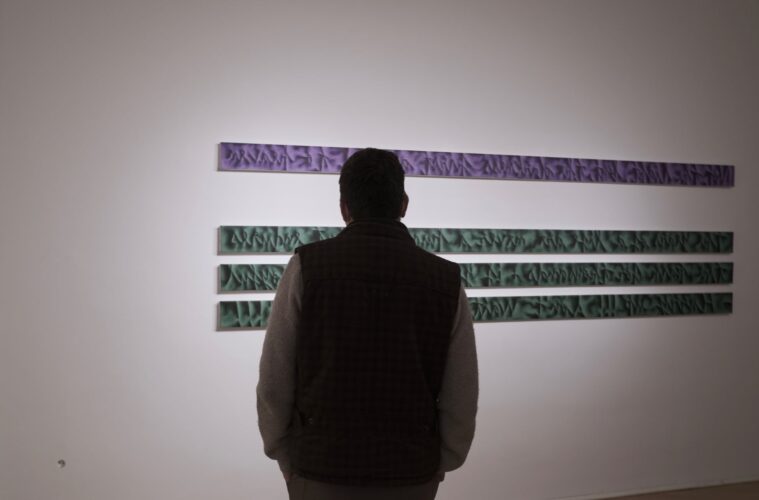
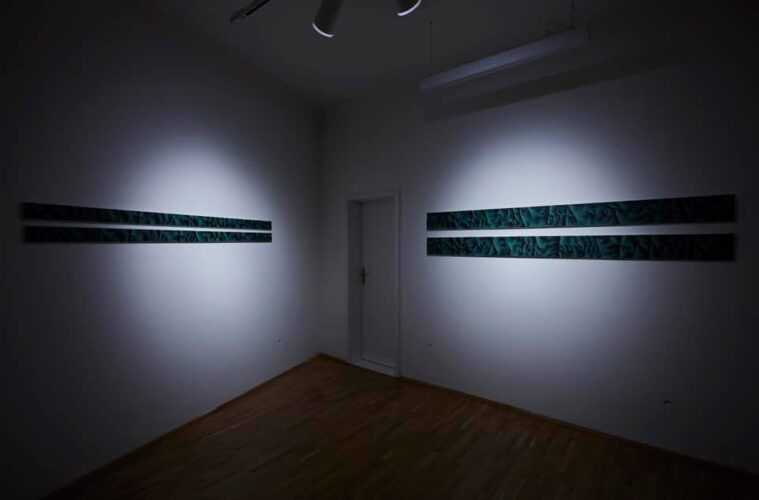
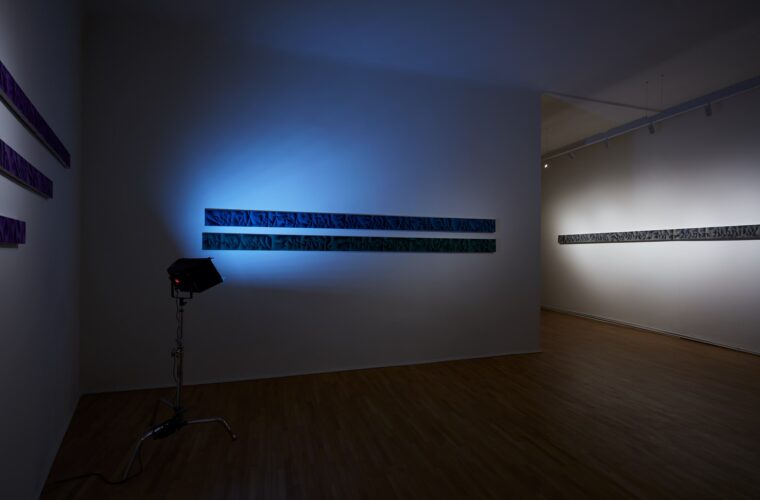
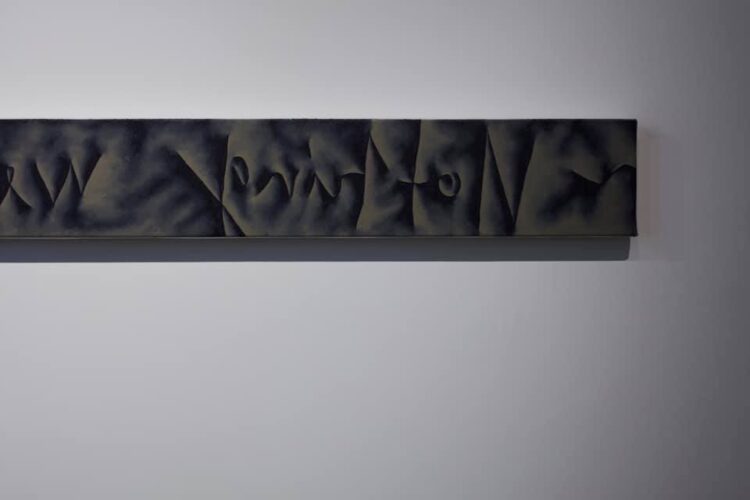
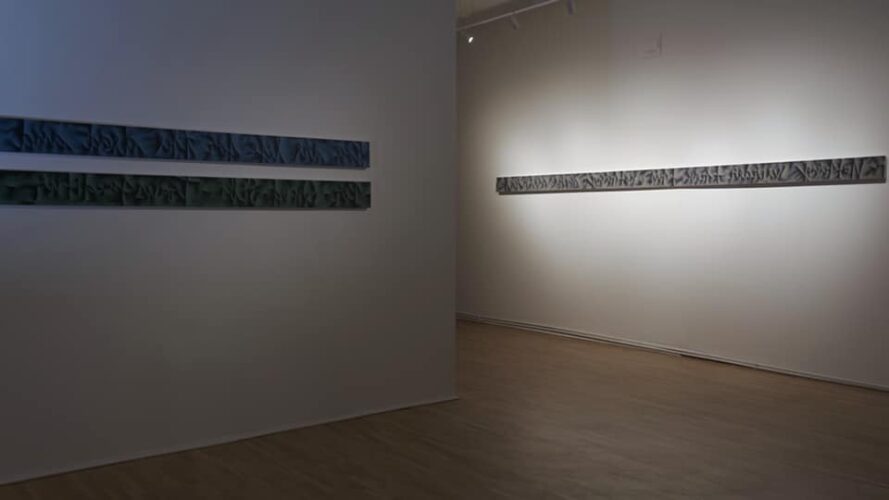
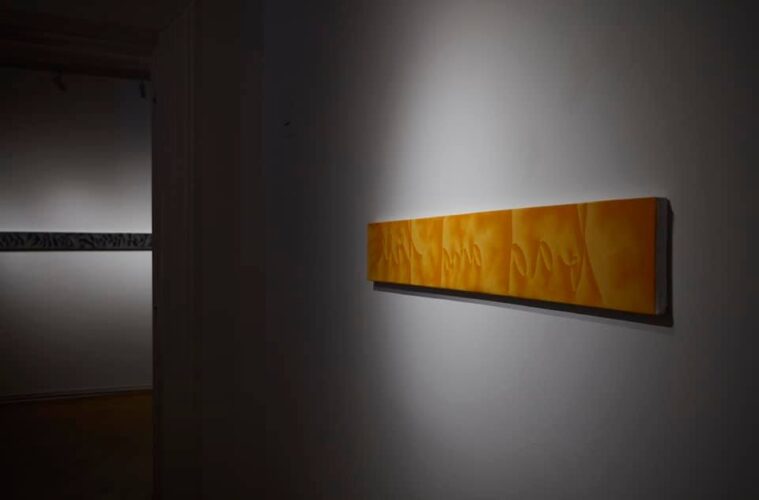

Comments are closed here.